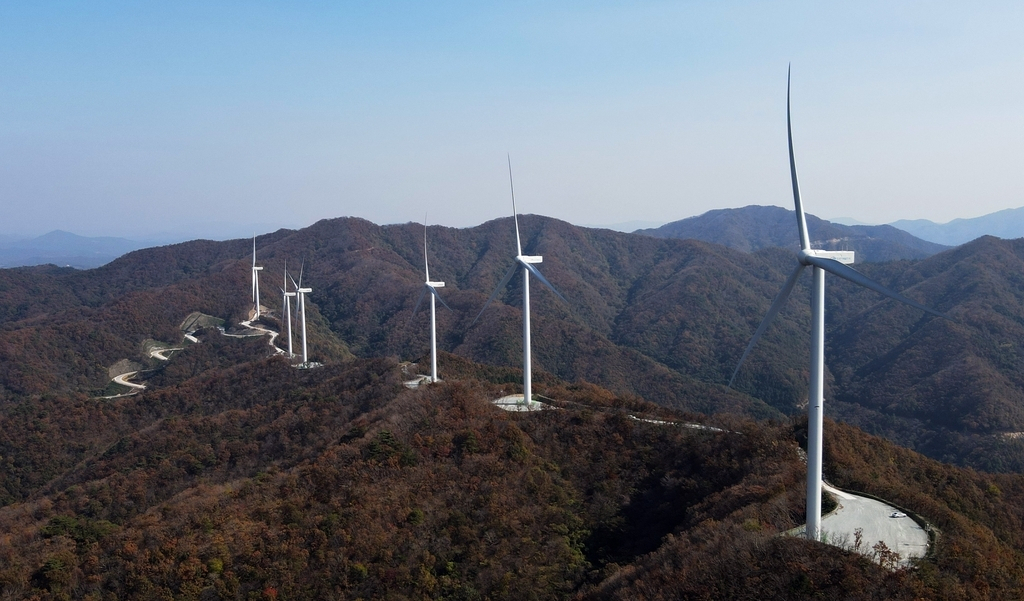 |
A wind farm built by Doosan Heavy Industries & Construction Co. in Jangheung, about 400 kilometers south of Seoul, is seen in this photo provided by the power plant builder on Nov. 4, 2021. (Doosan Heavy Industries & Construction Co.) |
The amount of electricity generated from renewable energy in South Korea touched an all-time high in 2021 on government efforts to cut greenhouse gas emissions, data showed Monday.
Electricity produced from renewable energy sources came to 43,085 gigawatt hours last year, accounting for 7.5 percent of the country's total power generation, according to the state-run Korea Electric Power Corp.
The ratio was three times higher than that a decade ago. It marked the first time for the share to surpass the 7 percent level.
The volume of power generated from solar power, wind power and other renewable energy sources was also up 3.5 times from 10 years earlier.
The sharp rise in renewable energy's proportion came as South Korea's push to greenhouse gas emissions to cope with global warming and climate change.
The proportion of electricity coming from liquefied natural gas (LNG) surged to 29.2 percent from 22.7 percent over the cited period.
In contrast, coal-fired thermal power accounts for 34.3 percent of the country's electricity output last year, down from 40.8 percent in 2011.
The ratio for nuclear power plants also declined to 27.4 percent from 31.1 percent due to the previous government's policy to cut back on nuclear power generation.
As of the end of December, the power generation capacity of renewable energy sources amounted to 24,855 megawatts, 6.9 percent higher than that for the country's nuclear power plants. It was the first time for renewable energy sources to overtake nuclear power plants in terms of capacity.
But the new Yoon Suk-yeol administration, which took office May 10, is committed to expanding the proportion of electricity generated from nuclear power. Asia's fourth-largest economy presently operates 24 nuclear reactors. (Yonhap)







![[Weekender] Korea's traditional sauce culture gains global recognition](http://res.heraldm.com/phpwas/restmb_idxmake.php?idx=644&simg=/content/image/2024/11/21/20241121050153_0.jpg)